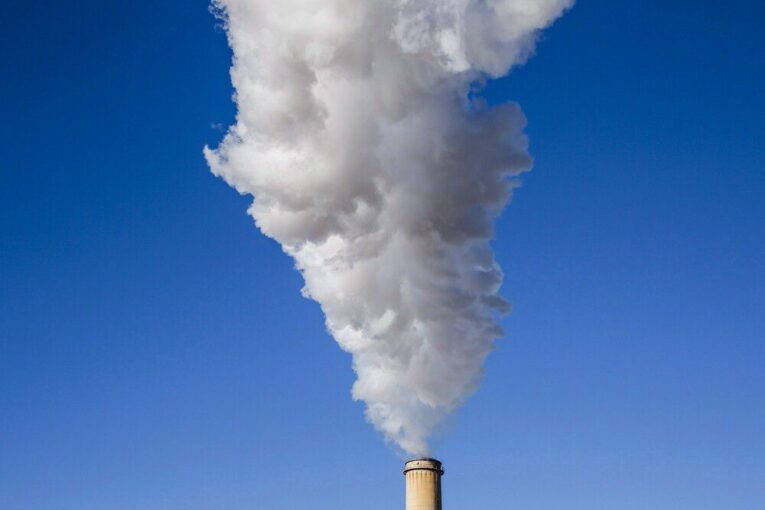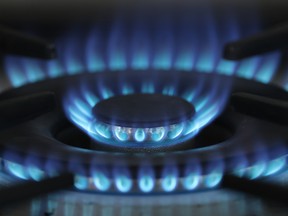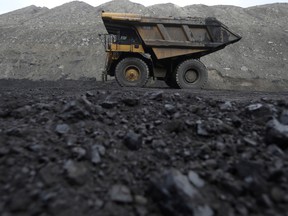
CALGARY — Alberta’s electric utilities’ strategy to switch their energy source from coal to natural gas has put them in an awkward position: Burning coal is cheaper than natural gas, even after paying the federal $75-per-tonne carbon tax.
Last week, Heartland Generation said it had completed a multi-year project to convert its coal-fired power plants in Alberta to run on natural gas. The conversion allowed Heartland to leapfrog TransAlta Corp. to become the largest provider of natural gas-fired electricity in the province.
The switch would cut the company’s CO2 emissions from those converted power plants by roughly half, said Rob Dutton, president and CEO of Heartland Generation, a Calgary-based company that is now the largest natural-gas fired electricity producer in Alberta.
“At full fire, it’s a reduction of about half of the CO2, same with nitrous oxides and the like. It almost exclusively eliminates the metals — the small particulate matter — that goes out the stack,” Dutton said, noting that roughly half of the company’s generating capacity came from coal two years ago, but the company has cut that to zero now.
But the switch comes at an inopportune time for the company.
Natural gas prices in Alberta have jumped 43 per cent to $4.61 per gigajoule at the AECO pricing hub, from $3.21 per GJ last year. At times this fall, the price surpassed $5 per GJ, making the power and heat source a more expensive option for electricity generation than via coal.

Coal prices have also risen as utilities consider gas-to-coal switching. The U.S. Energy Information Administration puts the price of coal in the Powder River Basin, immediately south of Alberta in Wyoming, at US$30.70 per ton, which is up US$16.30 per ton over the past week.
“Even with the cost of carbon as it stands today, and the cost of gas that has shown up, at this point in time, the price of gas would affect that decision of switching,” Dutton said.
Heartland, backed by New York private equity firm Energy Capital Partners, bought its coal and gas-fired power plants from Canadian Utilities Ltd. for $835 million in 2019 and has been working on retrofits to switch the coal-fired Battle River and Sheerness generating stations to run on natural gas since that time. The company said the cost to retrofit the Sheerness project to run on gas was $32 million, or $16 million for Heartland’s 50 per cent stake in the power plant.
Even as the cost of natural gas has risen, Dutton said the company will not return to coal.
We’ve embarked on this and we think that over the long-term this is the right path forward
Rob Dutton
“We’ve embarked on this and we think that over the long-term this is the right path forward,” he said, adding that the company has hedged some of its natural gas volumes to keep its costs in check as natural gas prices have risen.
Additional coal-fired power plants in Alberta are in the process of converting to natural gas and those retrofits are expected to wrap up in 2023, at which point the province will be completely off coal-fired power, said Duane Reid-Carlson, president and CEO of EDC Associates Ltd.
EDC Associates forecasts Alberta power prices will average $100.55 per megawatt hour for the remainder of 2021, falling to $93.96 per MWH in 2022. Those prices are twice as high as in previous years, which will drive consumers’ monthly power bills up. The annual average hourly power pool price in 2020 was $46.72 per MWH, and $54.88 per MWH.

Power prices in Alberta were as low as an average of $18.28 per MWH in 2016.
Reid-Carlson said the province’s electric generation mix will become more dependent on natural gas and renewables, especially wind, which will increase the correlation between natural gas commodity prices and power prices in Alberta.
“What that’s going to lead to is significant increase in price volatility at the hourly level because you’ll either be running on gas or running on wind,” Reid-Carlson said. “You’ll go between the extremes of zero when all wind is on, when we’ve got excess energy, and then in the high demand periods, when there’s no wind and all thermal natural gas fired, depending on the price of natural gas you’ll see higher prices making up for the zero-priced hours.”
Reid-Carlson said this change would have an effect on consumers’ power bills, as power prices could spike dependent on the weather. However, he said the changes would likely average out over the course of a month.
Natural gas has been slowly displacing coal from the province’s electricity mix for 10 years and surpassed coal as the main source of electricity in the province in 2017.
The switch from coal to gas accelerated when the province’s previous NDP government implemented climate change legislation, including a more stringent carbon tax, in Nov. 2015.
“There’s been a pretty good relationship (between gas prices and power prices) historically even with the amount of coal that we used to have in the system, largely because marginal prices have always been set by the natural gas units,” Reid Carlson said.
• Email: [email protected] | Twitter: geoffreymorgan
_____________________________________________________________
If you liked this story, sign up for more in the FP Energy newsletter.
______________________________________________________________
You can read more of the news on source
